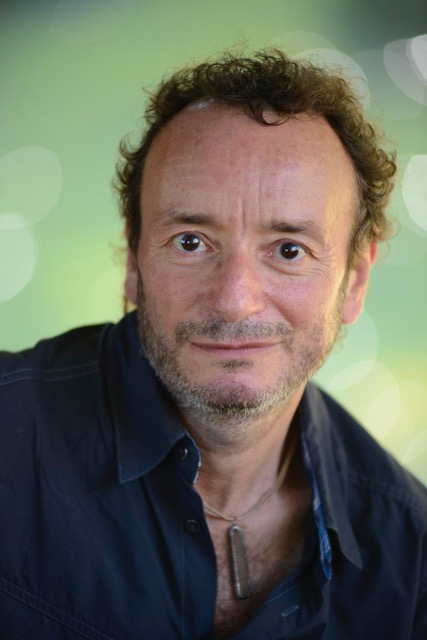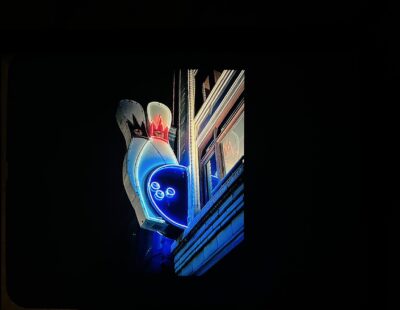
On a remote farm in Iceland, a middle-aged couple works a sheep farm. Their marriage appears to be solid, even though the woman, María, seems a tad discontent compared to her husband, Ingvar. They both work long hard days made even longer by the midnight sun. Neither need to talk – each knows their job. It’s lambing season, and during one assisted birth, María and Ingvar appear astonished by the look of one particular newborn. We can only see its cute little lamb head, but obviously something is amiss. They carefully wrap it up in a blanket, carry it to their warm home, and nurture it with a baby bottle. They eventually name it Ada and begin to raise it as their little girl. But what was that unseen creature heard walking across the foggy tundra at the very start of the film, startling wild horses with its heavy breathing and thundering footsteps? This is the setup for the quietly suspenseful Nordic fable, Lamb, currently playing at the recently reopened Del Mar Theatre. It’s a telling title. Lamb, the word, can be defined as a young sheep as well as a term of endearment, especially for a young child. Ada is a hybrid of both definitions.
First time director Valdimar Jóhannsson, working from a script that he co-wrote, takes full advantage of the Icelandic landscape to enhance his minimalistic style of storytelling, favoring striking images and cinematic grammar over exposition. It’s become cliché to say so, but the environment becomes a character unto itself. The wide-open vistas, surrounded by an oppressive mountain range, are both beautiful and unnerving in their expansiveness. Jóhannsson’s storytelling is languid, the performances taciturn, the dialog so sparse its sum total couldn’t have filled more than a few typewritten pages. In fact, it’s what one might expect from Béla Tarr, the great master of the Slow Cinema Movement, who served as Lamb’s executive producer.
The original Girl with the Dragon Tattoo, Noomi Rapace, mesmerizes as María. With little more than her expressive eyes and the rare ability to project interiority to a degree seldom seen outside of performances by Isabelle Huppert or fellow Scandinavian Mads Mikkelsen, Rapace reveals subtle glints of desperation verging on sadomasochism which fuels her decision to essentially welcome a changeling into her life. Ably inhabiting the role of the steadfastly loyal and accommodating husband, Ingvar, is Hilmir Snær Guðnason, although he is somewhat underutilized. Björn Hlynur Haraldsson, however, gets the chance to juice things up with an unexpected second-act appearance as Ingvar’s brother, Pétur. Like any good third wheel, the arrival of Pétur introduces additional tension and complexity into the proceedings, with a backstory that suggests past intimacies with María.
Despite a dearth of dialog, Lamb has no shortage of weighty themes. Lamb evokes ruminations on the fraught complexities of human-animal relations, whether it’s what we choose to eat, the arbitrary value we assign to the lives of different species, or our tendency to anthropomorphize. It’s also about the effect of a heartbreaking void crying out to be filled in any way it can. Lamb could even be read as a warning that couldn’t be timelier: Don’t mess with Mother Nature, or, in this folk tale with a pagan twist, don’t mess with Father Nature.
For KSQD’s Film Gang, this is Paul Kanieski










